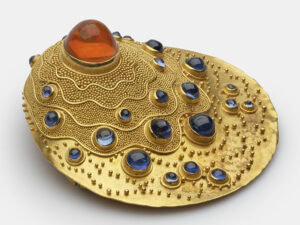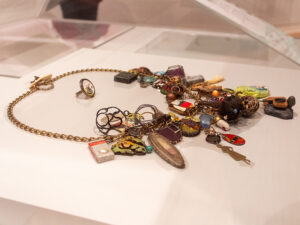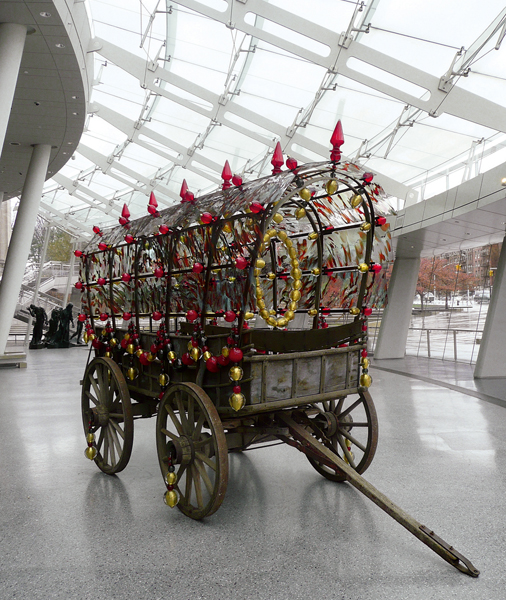
Throughout his career, Othoniel has referenced the body, as a whole and in part, mostly with sexual overtones. Self-Portrait in Priest’s Vestments (1986) is a black and white photograph of the artist, depicting him on a frozen dam mourning his first love, who committed suicide. The artist wears a white linen garment (Priest’s Robe, 1986), which hung empty beside the photograph. These works illustrate Othoniel’s engagement with the human entity, apparent or implied, defined or distant, and presage the “necklace” sculptures to come in which he appropriates the configuration of strung beads to explore weighty issues of human trial and transformation.

For the past decade, Othoniel has investigated the theme of absence through spatial voids created within monumental, curvilinear structures composed of voluminous spheres of blown glass strung on pre-shaped steel rods. Black is Beautiful (2003) is a 13-foot (3.96 m) “necklace” of plump black glass beads from Murano. It is meant to honor the sociocultural movement of the same name and was inspired by New Orleans’s century-old Zulu parade. It is doubtful, however, that the viewer will grasp the reference without reading title and copious wall text. The pieces reminiscent of Mardi Gras necklaces–traditionally thrown out at revelers and upwards into trees–are far more evocative. Othoniel created multicolored examples on a large scale and hung them from tree branches in the sculpture garden of the New Orleans Museum of Art (2002). This installation also speaks bitterly of the dangling corpses of lynched African Americans, a subject revisited with White Necklace in 2007.
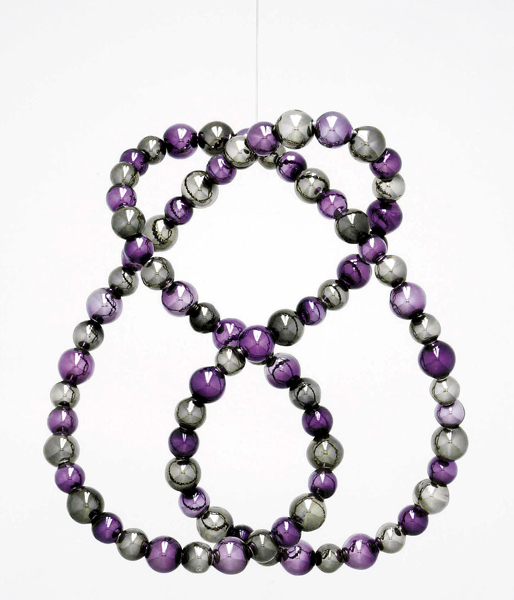
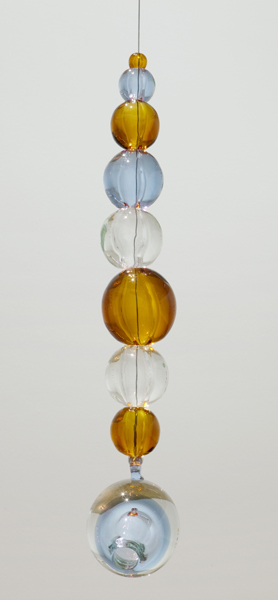
A comprehensive 264-page monograph Othoniel, with text by Catherine Grenier, Deputy Director of the Centre Pompidou, was published in English by SKIRA in 2012. It is available through the museum for $55.




